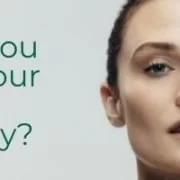Although an estimated 2.6 million Americans receive Botox treatments every year 75% of patients are secretive about it. In Britain, secrecy about treatment runs high as well, with 72% of women and 81% of men not saying a word about their treatments. Usually, when complimented on their improved appearance, patients make up a cover story, sometimes attributing their sudden youthfulness to the use of a sunblock or a moisturiser.
In a recent survey in southern California, plastic surgeons estimated different percentages to the level of secrecy. The average estimate is about 45%.
Dr. Edward Domanskis, a plastic surgeon in Newport Beach, estimated it to be from 60% to 70%. Dr. Ashkan Ghavami, a plastic surgeon in Beverly HIlls, approximated it to be about 60%. Dr. Val Lambros, a plastic surgeon in Newport Beach, guessed it to be from 30% to 40%. Dr. John Di Saia, a plastic surgeon in San Clemente and Anaheim, reckoned it to be less than 10%. And Dr. Michael Persky , a plastic surgeon in Encino, made an educated guess at about 15%, with 99.9% for celebrities.
Doctors are asked to keep the treatments a secret. Patients ask doctors to only call them on their mobile phones within a certain time frame. Women might only come for treatments while their husbands are out of town on a business trip to allow for enough time for the bruising to heal. Some of these women get all their treatments done all at the same time. Others spread them out; for instance, lips one month, Botox the next month, and so on.
Sculptra, a new, slow-acting dermal filler, is especially popular with secretive patients. During their research, the manufacturers learned that a certain population wanted gradual, rather than a sudden improvement in their appearance. Consequently, doctors usually ask patients if they would prefer a slower transformation in their features. With Sculptra injections, it may take from 6 to 10 weeks for the full effects to show. For secretive patients, this is a perfect solution. However, the effects of Botox and other even fillers are also easy to hide. According to Dr Val Lambros, “If you fill nasolabial folds it’s pretty easy to hide, but more advanced uses of fillers in other parts of the face, like around the lower lids can bruise and be harder to hide. Of course the chance of bruising is higher the more you want to avoid it.”









